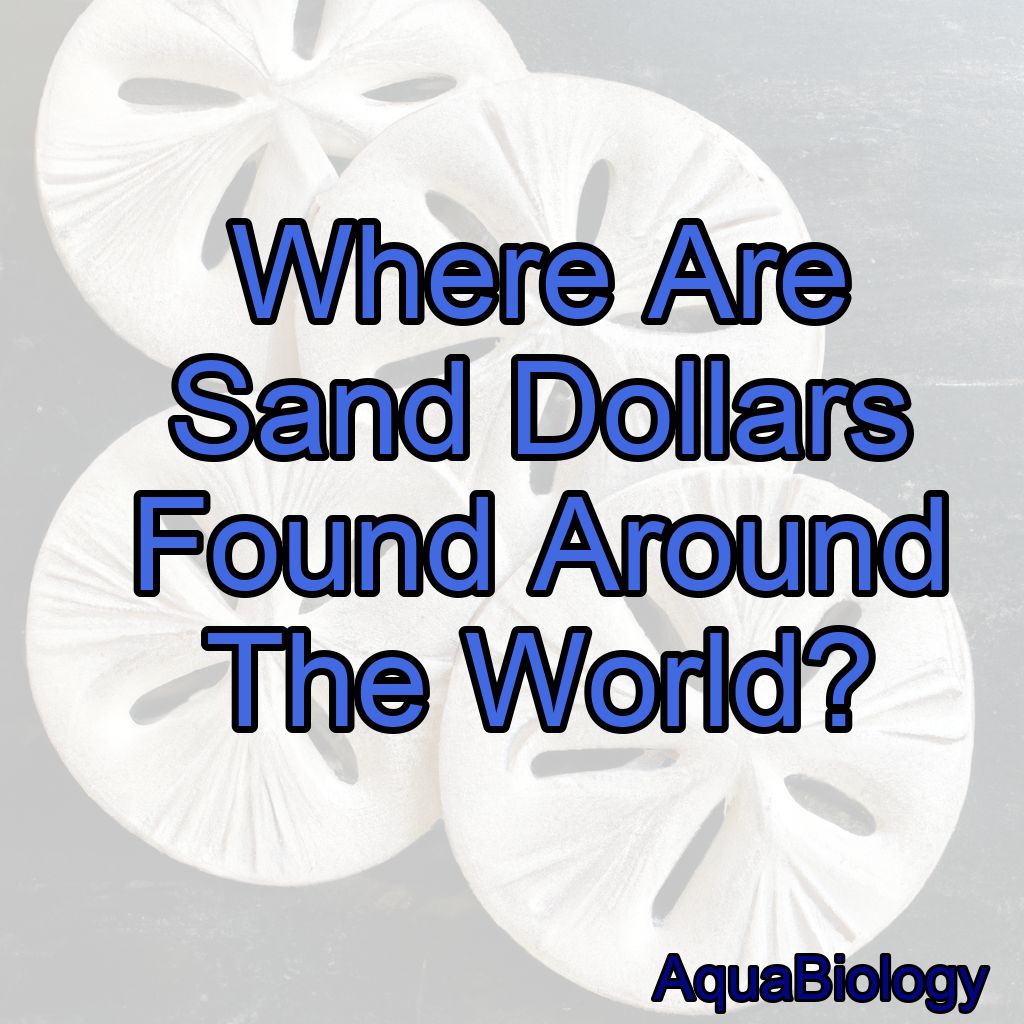As a marine biologist, I’ve always had a fascination with sand dollars. These beautiful echinoderms have a unique look and are found in many parts of the world.
Sand dollars are found in temperate and tropical marine waters, particularly in the Northern Hemisphere’s Atlantic and Pacific coasts.
In this blog post, I’ll dive into the locations where sand dollars are commonly found and share some interesting facts about these creatures.
The Pacific Coast of North America
One of the most common places to find sand dollars is along the Pacific coast of North America.
These areas include California, Oregon, and Washington.
Sand dollars are often found in the sandy, shallow waters close to the shore.
They can also be found in tide pools and rocky areas.
The Caribbean and Gulf of Mexico
In addition to the Pacific coast of North America, sand dollars are often found in the Caribbean and Gulf of Mexico.
These areas have warm waters and sandy bottoms that provide the perfect habitat for sand dollars.
If you’re lucky enough to visit a beach in these areas, keep your eyes peeled for these beautiful creatures.
The Mediterranean Sea
Sand dollars can also be found in the Mediterranean Sea. While they are not as common in this area, they can be found along the sandy bottoms of the sea.
In fact, the Mediterranean sand dollar is a unique species that is only found in this area.
The Indian Ocean

Another location where sand dollars can be found is the Indian Ocean.
These creatures are often found in the shallow waters off the coast of India and other areas in the region.
They are also commonly found in the waters around the Maldives.
The Atlantic Coast of North America
While sand dollars are not as common along the Atlantic coast of North America as they are on the Pacific coast, they can still be found in this area.
They are often found in the waters off the coast of Florida and the Carolinas.
Australia
Australia is another location where sand dollars can be found. These creatures are often found in the waters around the Great Barrier Reef and other areas in the region.
In fact, the sand dollar is the most common echinoderm found in this area.
The Arctic Ocean
Believe it or not, sand dollars can even be found in the Arctic Ocean.
While they are not as common in this area as they are in other parts of the world, they can be found in the shallow waters around the Arctic.
Conclusion
In conclusion, sand dollars can be found in many parts of the world.
From the Pacific coast of North America to the Indian Ocean and even the Arctic, these creatures have adapted to thrive in a variety of environments.
Here are five interesting facts about sand dollars to keep in mind:
1. Sand dollars are echinoderms and are related to sea stars and sea urchins.
2. Sand dollars are covered in tiny spines that help them move along the sandy bottom.
3. Sand dollars are often found in large groups, or beds, on the ocean floor.
4. Sand dollars are known for their unique, circular shape and the five-pointed star on their surface.
5. Sand dollars are an important part of the ecosystem, providing food for many other creatures in the ocean.
FAQs
What is the best time to look for sand dollars?
The best time to look for sand dollars is during low tide when the water has receded and the sand dollars are exposed on the beach.
What month is best to find sand dollars?
Sand dollars can typically be found year-round, but the best time to find them is during low tide in the summer months when the water is calmer and clearer.
What happens if you find a sand dollar?
If you find a sand dollar, you can keep it as a souvenir or return it to the ocean.
However, it is important to note that some species of sand dollars are protected and it may be illegal to take them from the beach.
It is best to check local regulations before taking any natural objects from the beach.
Is it common to find a sand dollar?
Yes, it is common to find a sand dollar on beaches in coastal areas around the world.
Is a sand dollar hard to find?
It depends on the location and season, but in general, sand dollars can be challenging to find due to their fragile nature and the fact that they are often buried in the sand.
Where are sand dollars usually found?
Sand dollars are usually found in shallow, sandy areas of the ocean floor, such as beaches, sandbars, and near coral reefs.




